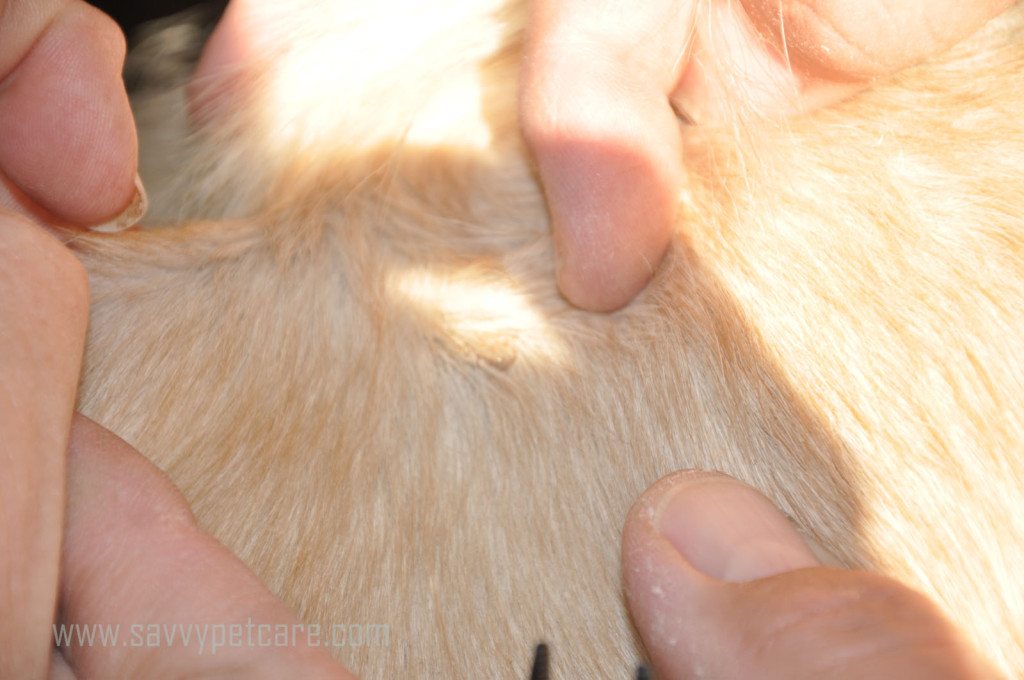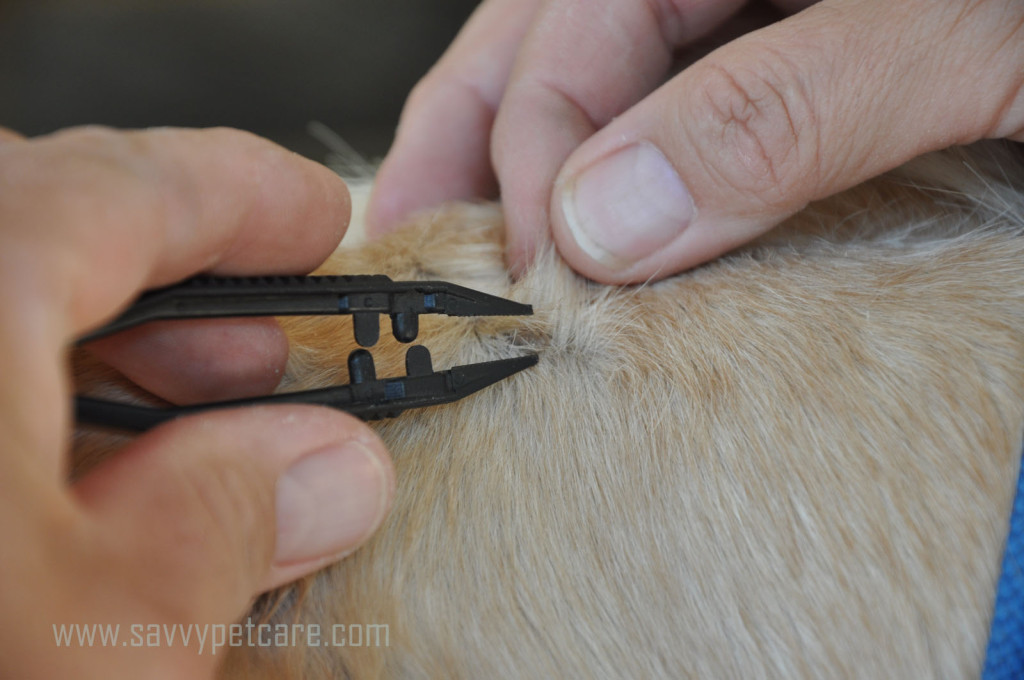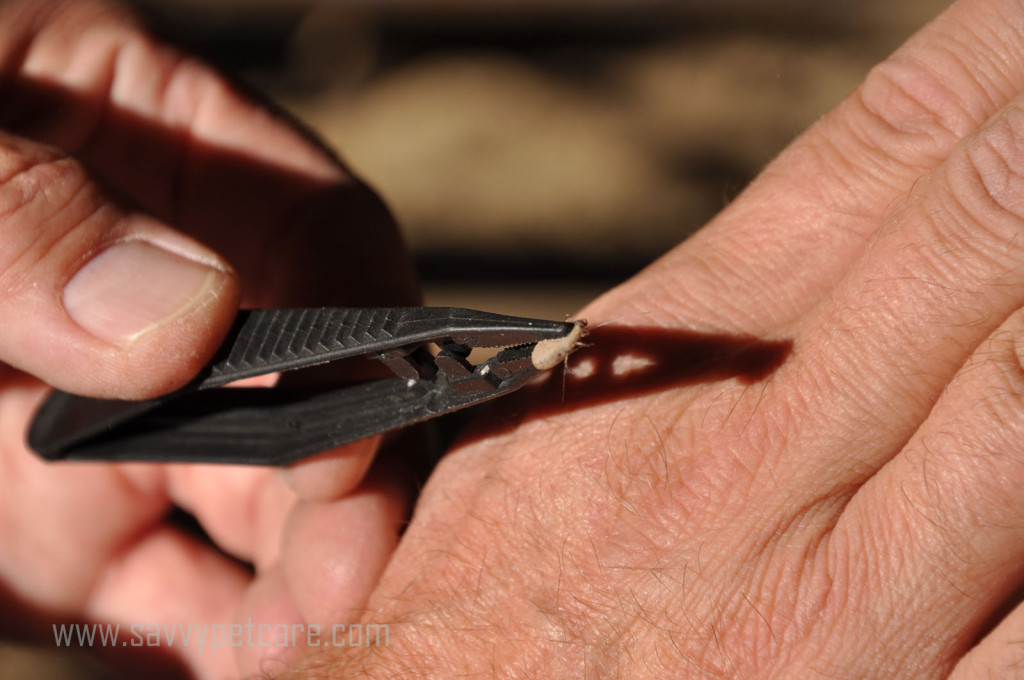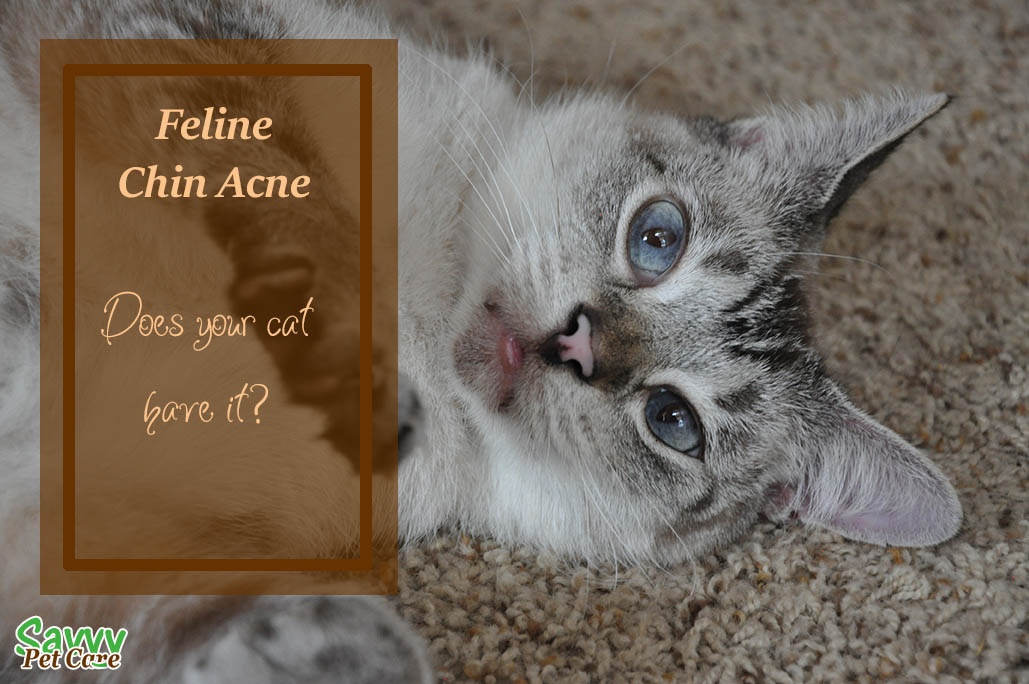For the life of me, I can’t think of any reason in nature that ticks would be necessary, but they are here and carry diseases that can create another whole set of problems that I’m not going to cover this time. Suffice it to say that I check both myself and my dog every time we go for a walk on the trails.
When I first got Dieter, before I knew him as I do now, he got a tick on his muzzle. I felt so guilty for not noticing it there much earlier. It was already the size of a small peanut. I had heard in the past to put a hot match on them, or alcohol and a number of other methods which will not safely remove a tick. What I did find is that there is a lot of info out there on how to do it safely. I followed these simple instructions from Doctors Foster and Smith.
To safely remove an attached tick, use a pair of fine-tipped tweezers or special tick removal instruments. These special devices allow one to remove the tick without squeezing the tick body. This is important as you do not want to crush the tick and force harmful bacteria to leave the tick and enter your pet’s bloodstream.
Grab the tick by the head or mouth parts right where they enter the skin. Do not grasp the tick by the body.
Without jerking, pull firmly and steadily directly outward. Do not twist the tick as you are pulling.
Using methods such as applying petroleum jelly, a hot match, or alcohol will NOT cause the tick to ‘back out.’ In fact, these irritants may cause the tick to deposit more disease-carrying saliva in the wound.
After removing the tick, place it in a jar of alcohol to kill it. Ticks are NOT killed by flushing them down the toilet.
Clean the bite wound with a disinfectant. If you want to, apply a small amount of a triple antibiotic ointment.
Wash your hands thoroughly.
Please do not use your fingers to remove or dispose of the tick. We do not want you in contact with a potentially disease-carrying tick. Do NOT squash the tick with your fingers. The contents of the tick can transmit disease.
Once an embedded tick is manually removed, it is not uncommon for a welt and skin reaction to occur. A little hydrocortisone spray will help alleviate the irritation, but it may take a week or more for healing to take place. In some cases, the tick bite may permanently scar leaving a hairless area. This skin irritation is due to a reaction to tick saliva. Do not be worried about the tick head staying in; it rarely happens.


























Pingback: Foxtails -- Not Just for Outdoor Pets - Dangers of Foxtails